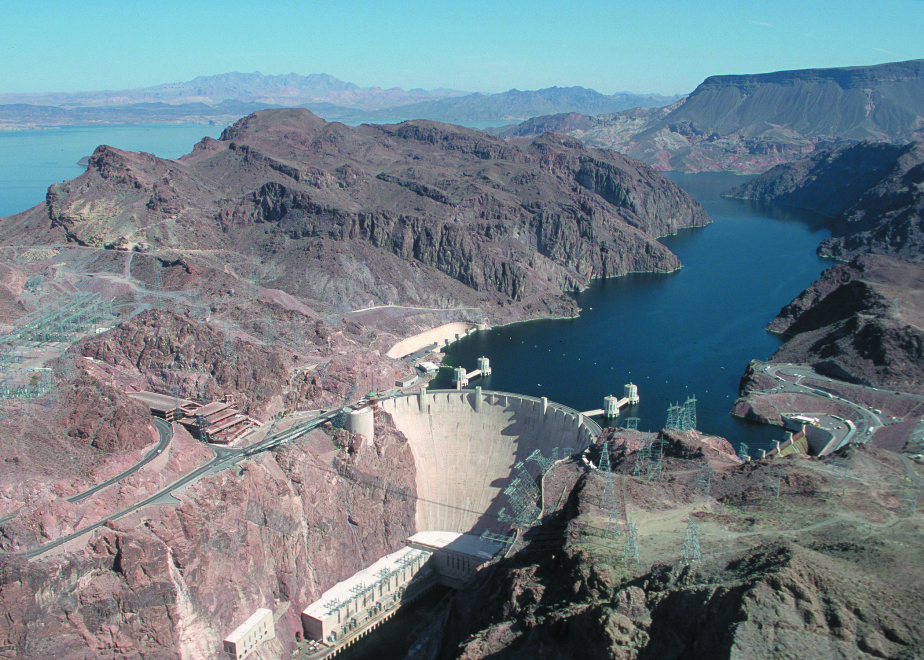In 1909 an engineering genius called Ezra F. Scattergood became the chief electrical engineer of Los Angeles and soon made himself boss of the biggest municipal power system in the world. It was Scattergood who brought together the coalition of seven states which got colossal quantities of water and power to share out among them by harnessing the Colorado River system to a vast dam at Boulder Canyon, Nevada. It was his work that lay at the root of the Tennessee Valley Authority concept in the age of F. D. Roosevelt – which was why the President invited him to see the site of the TVA at Muscle Shoals in 1933.
Scattergood made California electricity cheap and available virtually everywhere in the region. By 1912 California was next to New York in quantities of electric power used. During World War One, the decision was taken to pool all the power of this 1,200-miles-long state through a single, central administration. By 1924, in the United States as a whole, only 35 percent of homes were wired for electricity, but in California the figure was 83 percent. Nationally, the cost per kilowatt-hour averaged $2.17. In California it was $1.42. In 1924, when 90 percent of all farms in America were still without electricity at all, it was not unusual to see all-electric farms in California, with electrically milked cows, electric pumps irrigating orchards and fields, and the full range of appliances in the farmhouse.
Henry Edwards Huntington, nephew of the Southern Pacific railroad tycoon Collis Potter Huntington, who sold control of the Southern to Harriman in 1903, thereafter had two main interests. One was to collect books and art for his great Foundation, the Huntington Library at San Marino near Pasadena. The other was to equip Southern California with the largest, cheapest, and most efficient inter-urban transport system in the world.
Scattergood’s Boulder Canyon project ran into powerful opposition, which meant delays, and digging did not start till 1930. But then it became a world phenomenon. FDR himself dedicated the completed dam in 1935. It was the biggest dam in the world. Its cheap power made possible the vast manufacturing industries which flourished in California during World War Two, and transformed the entire West Coast. Further north, in Seattle, a disciple of Scattergood, J. D. Ross, also preached the gospel of cheap electricity, and practiced it. By the 1930s Seattle had more electric ranges than any other American city. A few years later it, too, was sharing in the wartime industrial expansion which made it the center of the US aviation industry.

